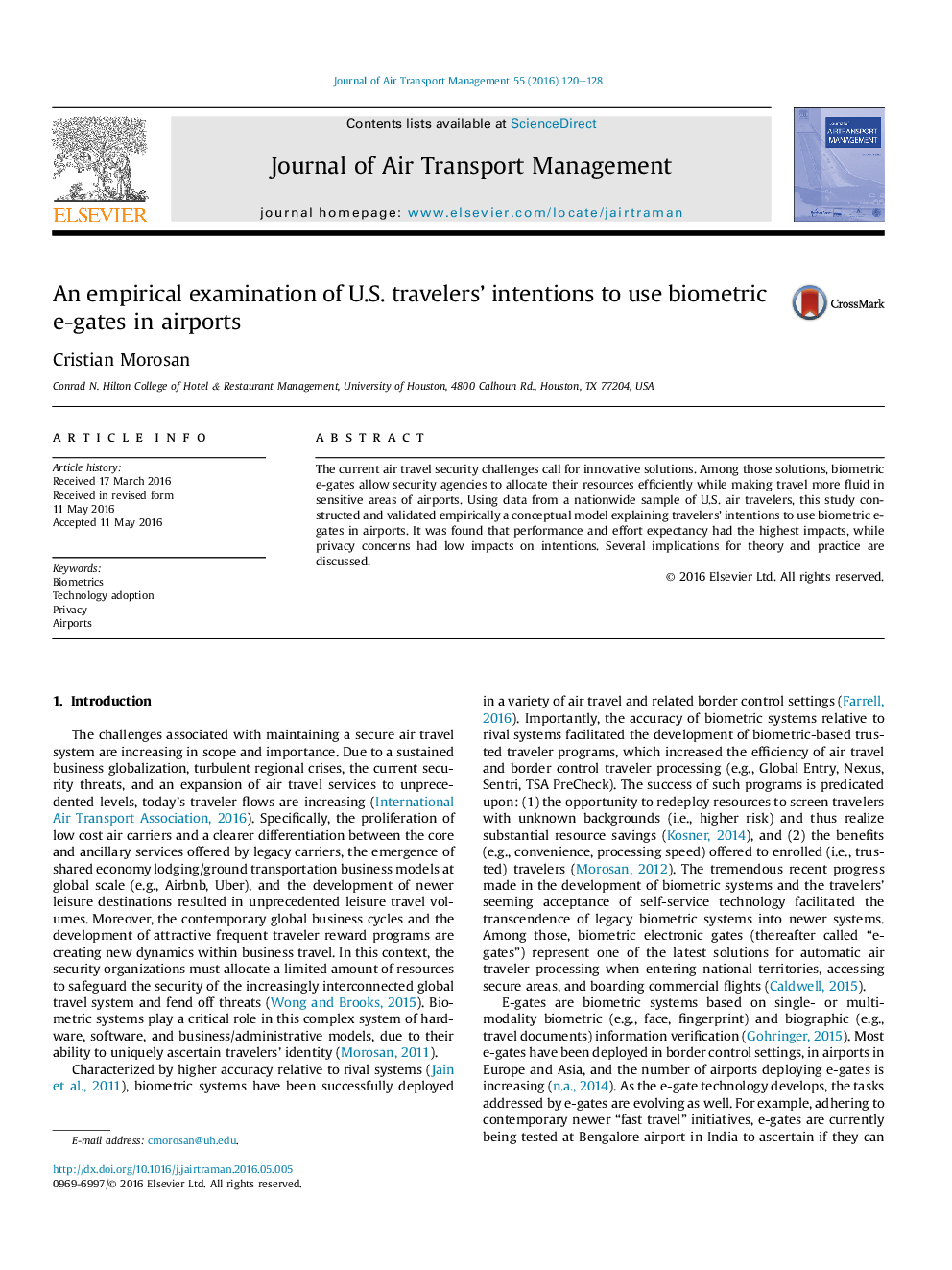| Article ID | Journal | Published Year | Pages | File Type |
|---|---|---|---|---|
| 7435489 | Journal of Air Transport Management | 2016 | 9 Pages |
Abstract
The current air travel security challenges call for innovative solutions. Among those solutions, biometric e-gates allow security agencies to allocate their resources efficiently while making travel more fluid in sensitive areas of airports. Using data from a nationwide sample of U.S. air travelers, this study constructed and validated empirically a conceptual model explaining travelers' intentions to use biometric e-gates in airports. It was found that performance and effort expectancy had the highest impacts, while privacy concerns had low impacts on intentions. Several implications for theory and practice are discussed.
Related Topics
Social Sciences and Humanities
Business, Management and Accounting
Strategy and Management
Authors
Cristian Morosan,
